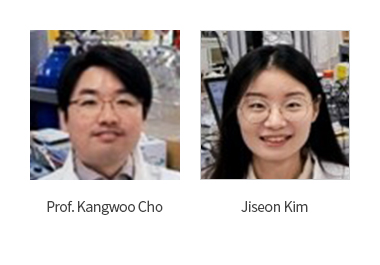Unveiling the Magic of Hydrogen Production from Municipal Sewage: Finding Pearls in the Soil
Professor Kangwoo Cho and PhD candidate Jiseon Kim from the Division of Environmental Science & Engineering at Pohang University of Science and Technology (POSTECH) collaborated with the Korea Institute of Science and Technology (KIST) to devise a novel catalyst aimed at enhancing the efficiency of reactions using contaminated municipal sewage to produce hydrogen—a green energy source. Their research recently featured in the international journal ‘Advanced Functional Materials.’
With the growing environmental concerns of pollution associated with fossil fuel, hydrogen has garnered increased interest. Water electrolysis technology is a sustainable process that leverages Earth’s abundant water to produce hydrogen. However, the concurrent oxygen evolution reaction during hydrogen production is notably slow, resulting in a considerably low energy conversion efficiency.
Lately, the academic community has been tackling this issue by integrating the urea oxidation reaction with the hydrogen generation reaction. Urea, a pollutant found in urine, releases a significant amount of energy during its oxidation process, offering a potential means to enhance both the efficiency of hydrogen generation and the purification of toilet wastewater. Ultimately, it is necessary to find a catalyst that can effectively drive the urea oxidation reaction, thereby amplifying the efficiency of both hydrogen generation and wastewater treatment.
In pursuit of increased efficiency in the urea oxidation reaction, the team created a catalyst known as nickel-iron-oxalate (O-NFF). This catalyst combines iron (Fe) and oxalate on nickel (Ni) metal, resulting in an expansive surface area characterized by nanometer-sized particles in fragment form. This unique property enables the catalyst to adsorb more reactants, facilitating an accelerated urea oxidation reaction.
In experiments, the O-NFF catalyst devised by the team successfully lowered the voltage required for hydrogen generation to 1.47 V RHE*1 (at 0.5 A/cm2) and exhibited a high reaction rate even when tested in a mixed solution of potassium hydroxide (1 M) and urea (0.33 M) with a Tafel slope*2 of 12.1 mV/dec. The researchers further validated the catalyst’s efficacy by confirming its promotion of the urea oxidation reaction through photoelectron/X-ray absorption spectroscopy using a radiation photo accelerator.
Professor Kangwoo Cho who led the research stated, “We have developed a catalyst capable of purifying municipal sewage while simultaneously enhancing the efficiency of hydrogen production, a green energy source.” He added, “We anticipate that O-NFF catalysts, synthesized from metals and organics, will contribute to the improved efficiency of industrial electrolysis hydrogen production.”

The research was sponsored by the Mid-Career Researcher Program and the Hydrogen Source Technology Development Program of the National Research Foundation of Korea, and the National Supercomputing Center.

